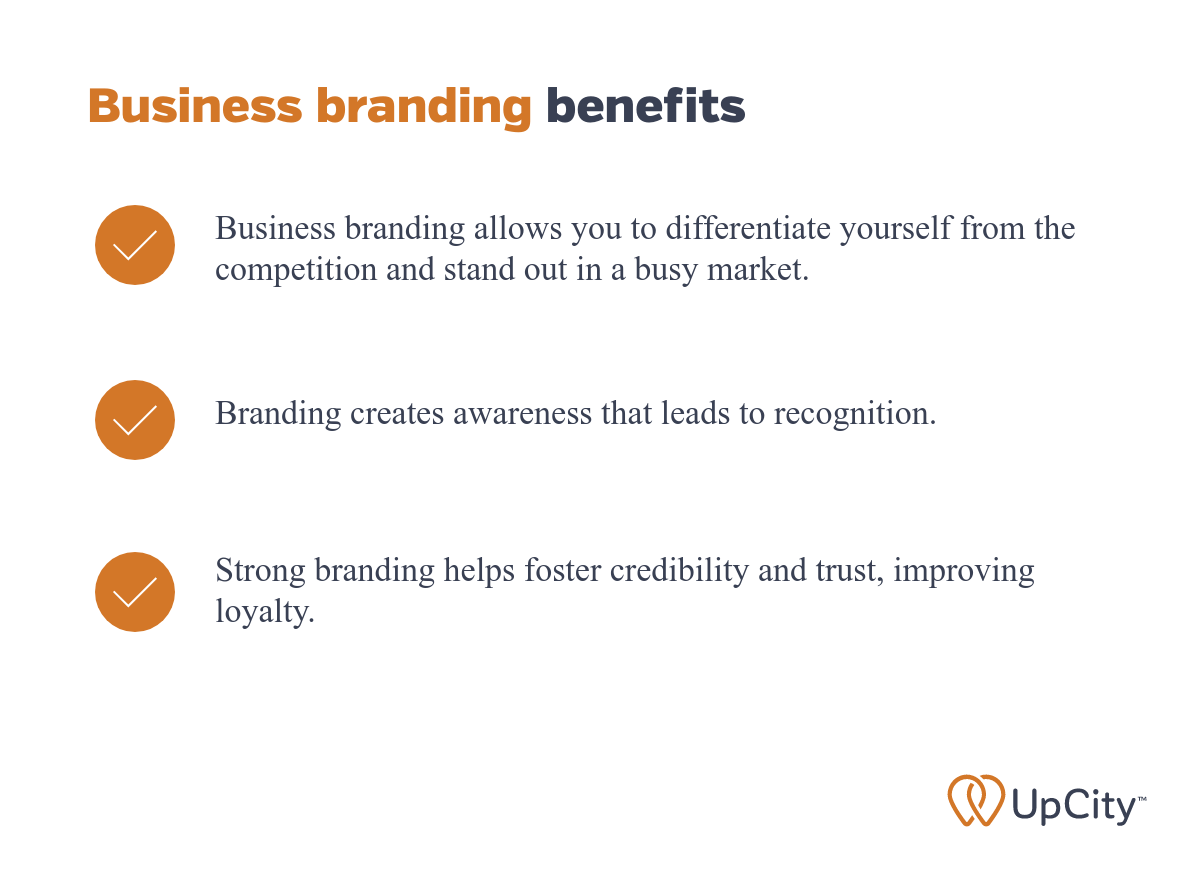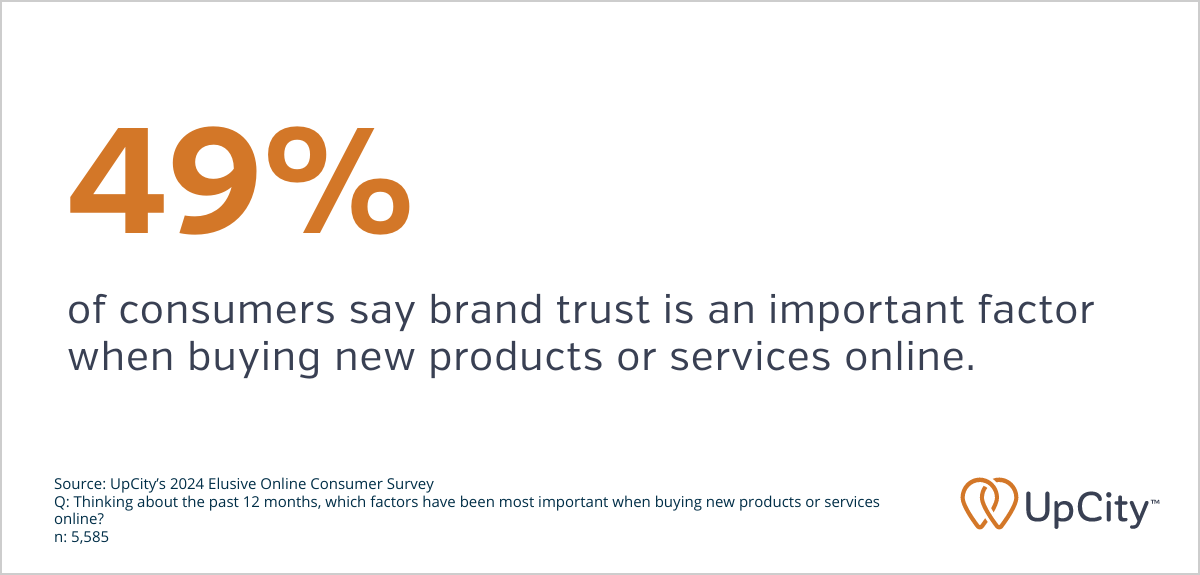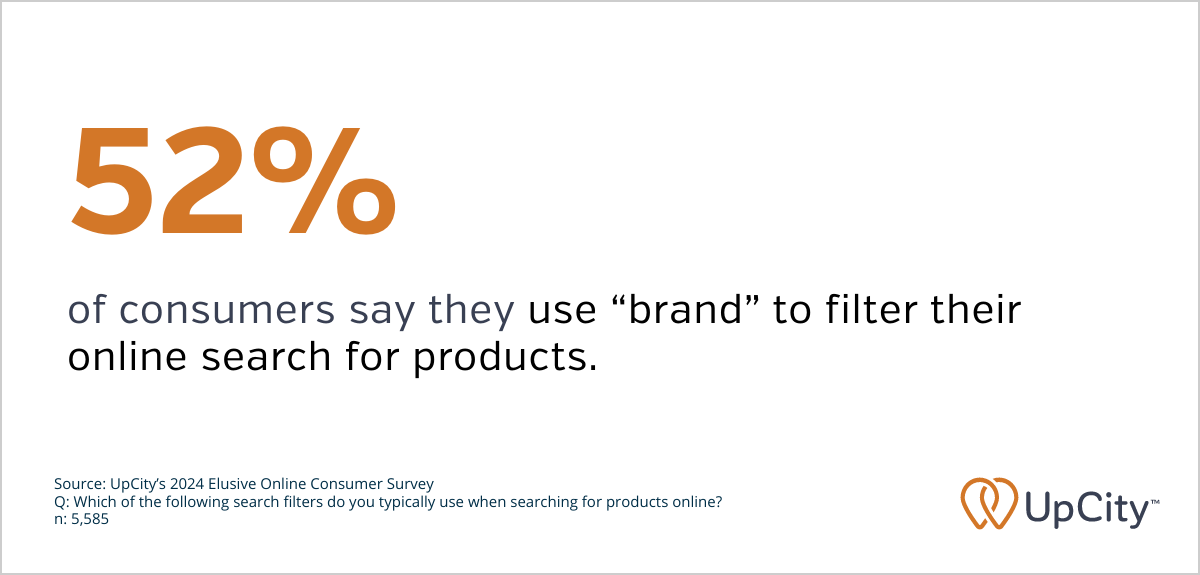The 2023 Gartner CMO Spend and Strategy Survey revealed that while CEOs have focused their CMOs on brand spending as a key priority, 82% of brand leaders are pessimistic about the ongoing economic and business climate’s impact on their brand. Though pessimistic, 50% of those business leaders are still willing to maintain brand marketing spending at a steady rate relative to reductions in other marketing channels [1].
Properly allocating budget towards branding requires small business owners and marketing leaders to understand what branding entails and how to implement a well-rounded brand strategy to strengthen the brand and drive consumer brand awareness.
What is branding?
Branding is the intersection of a company’s core identifying features—its name and logo, mission and values, corporate tone in public-facing content, and visual design elements—and the perception of your business those elements create in the minds of consumers. Branding is at the heart of a business’s identity and informs how the organization goes about advertising and positioning itself relative to its competitors.
For small businesses, strong branding practices can help differentiate the business and boost visibility and awareness. With the right combination of branding elements, small businesses can leverage brand awareness into loyalty, credibility, and trust.
Why is branding important for businesses?
Your organization is a complex machine composed of interconnected business processes, with branding working from the core of the operation to propel your resources towards the central goal of encouraging your customers to purchase your products or services. As a central driver, strong branding practices benefit small businesses in a number of ways.

Differentiate yourself from the competition
The goal of crafting a strong business brand is to give your company a visual uniqueness and a powerful voice across platforms and advertising mediums. Leveraging the right combination of logo, visuals, messaging, and other brand elements can help your business outshine a field of drab and forgettable competitors, helping to boost awareness and drive traffic to your website.
Branding creates awareness that leads to recognition
When brands have strong visuals and messaging, they become much more memorable to consumers. Memorable branding positions your company to remain top of mind in your business niche, so when customers perform a search for the products or services you provide, they are more likely to pick your brand out of the search results.
Strong branding helps foster credibility and trust, improving loyalty
When your business executes branding initiatives consistently across multiple platforms, customers come to know what to expect in terms of messaging and reputation. Delivering consistent service and rewarding your customers with value and convenience helps that trust to evolve into brand loyalty. According to UpCity’s 2024 Elusive Online Consumer Survey, 49% of survey respondents say brand trust is an important factor when buying new products or services online over the last 12 months.*

How to brand your business the right way
Branding is a multi-step process executed by your marketing team in order to set the groundwork for what your customers should expect in their experience with your company. However, according to the 2023 Gartner Brand Leaders Survey, 58% of brand leaders report that key stakeholders in their organizations struggle with a lack of understanding on how brand strategy works [2]. There are multiple channels and components through which your brand is communicated.
Establish values, mission, and value proposition
At the base of your branding, and any marketing strategy that evolves out of your branding, lies your brand’s value proposition. Your unique take on the products and services you offer that differentiate you from the competition become the basis for your company’s values and mission statement. Through these guiding principles, customers know up front whether your values align with theirs, and what they can anticipate in the experience of being a customer that they can’t get elsewhere in the market.
Create your outward facing identifiers
Your company name and tagline should be unique and engaging and act as a shorthand for conveying to potential customers your mission, values, and value proposition. Coupled with a unique and strategically designed logo, these elements are often the first visual marketing elements potential customers will experience.
Leverage your brand story and voice in your content marketing strategy
Your target audience is looking for a deep level of authenticity and connection with the brands they patronize. Your brand story is a powerful tool in your content marketing arsenal to boost your company’s authenticity and facilitate building loyalty. And with an established brand voice, your messaging will resonate with the right audience most likely to become customers. As those customers become more loyal, brand recognition and loyalty will naturally evolve from these conversions. In UpCity’s Elusive Online Consumer Survey, 52% of consumers say they typically use “brand” to filter search results when searching for products online.

Build your branding workflow
Establishing and building your brand identity is the best way of building your marketing strategy from the ground up. The above elements are touchstones in that journey, but there are a number of additional milestones that must be included in the process.
- Establish your company’s goals as a foundation for your branding strategy.
- Perform market research and identify your target market to inform your branding strategy.
- Use your market research and goals to establish your unique value proposition (UVP) to set yourself apart from the competition.
- Lean into younger generations’ preference for ethical companies with clear values by folding your mission and values into your branding.
- Use your market research to establish buyer personas, and then craft a brand voice that resonates with these market segments.
- Bring your UVP, values, mission, and voice together to tell your brand story, most effective when your business is mission-driven or the founder of the company has an interesting journey to ownership.
- Combine all of these branding elements into brand assets designed according to a cohesive style guide.
- Leverage the right branding assets across the right marketing channels.
Together, these marketing components and best practices comprise your brand strategy, and in order to best deploy your branding and support your business, create and actively maintain a brand guidelines document. This document will be the starting point whenever your marketing team has to launch marketing campaigns in line with your brand standards.
Common business branding terms
We’ve mentioned several branding-focused marketing terms to this point, but branding is a complex marketing concept and there are a few additional terms it’s helpful for small business owners to be familiar with.
- Brand assets refer to logos, icons, specific fonts, packaging styles, color palettes, and other elements that reinforce the brand identity and consumers readily associate with the specific brand.
- Brand attributes are a distillation of your brand vision and mission into key characteristics that represent the ways in which your brand stands out from competitors.
- Brand awareness describes how recognizable your brand is amongst your target audience and how well that audience knows your company.
- Brand identity refers to how your brand conducts itself according to your mission and values, and the tone you use to communicate your products or services.
- Brand positioning statement acts as an internal guide for your brand and marketing efforts and how you distinguish your company from the competition. In a sense, brand positioning is to internal stakeholders what your unique value proposition is to potential customers.
- Brand strategy leverages the elements of your brand to achieve the long-term growth of your business and the goals set forth by your marketing strategy.
Business branding ideas (with examples)
Effective branding comes in many forms and small businesses can leverage any number of strategies to stand out in their niche markets.
Be known for being the best
Establishing your brand’s unique value proposition can entail leaning into one aspect of your product or service that could be seen as an industry leading feature. For example, Death Wish Coffee touts itself as having one of the highest caffeine concentrations, going so far as to refer to itself as “The World’s Strongest Coffee.”
Lean into a design motif
You want your branding to remind people about your company. Many brands accomplish this by incorporating relevant imagery throughout their branding. For example, Luminosity is a company that helps people improve brain and memory function through fun exercises. It’s designers lean into the brain motif throughout its marketing assets and imagery to keep what they are known for top-of-mind.
Color theory inspires niche marketing design strategies
Creating your brand requires your design team to make crucial decisions about how the colors used align with your brand identity. Entrepreneurs can use color to create impressions or moods or influence consumer perception of the brand. For example, it’s a popular theory that websites use blue in their marketing identity to convey calm, wisdom, and strength. Healthcare and social media companies use blue, but the same perception may not work as well for food-related brands.
How can you leverage branding services for your business branding?
Marketing is a heavily outsourced business process, so it’s no surprise that the 2023 Gartner Brand Leaders Survey revealed that 60% of brand leaders reported that external service providers accounted for 25% to 49% of their brand strategy focused staff. [2]
Folding a branding agency or expert into your marketing workflow starts with exploring UpCity’s Branding Providers directory, where you can find an expert in branding who can help build your brand strategy.
Focus on building a stronger brand
Your brand should never be considered a static component of your marketing strategy. According to the 2023 Gartner Brand Leaders Survey, 81% of brand leaders believe that their capabilities must evolve in order to successfully execute their brand strategies in the coming year [2].
In addition to outsourcing and investing in branding in your overall marketing budget, your team can explore branding best practices and explore the advice of UpCity’s community of branding experts:
Sources
Survey methodology
*UpCity’s 2024 Elusive Online Consumer Survey was conducted online in April 2024 among 5,585 respondents in the U.S. (n=500), Canada (n=500), Brazil (n=497), Mexico (n=470), the U.K. (n=499), France (n=271), Italy (n=496), Germany (n=496), Spain (n=359), Australia (n=497), India (n=500), and Japan (n=500). The goal of the study was to learn about how today’s online consumer shops. Respondents were screened to have shopped online several times a month or more often.

